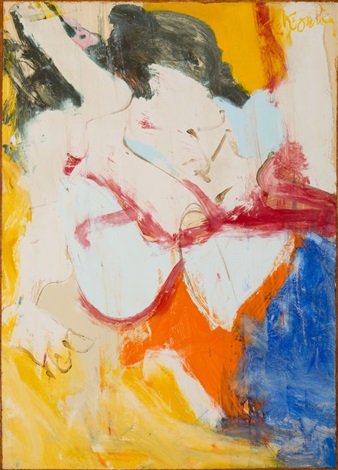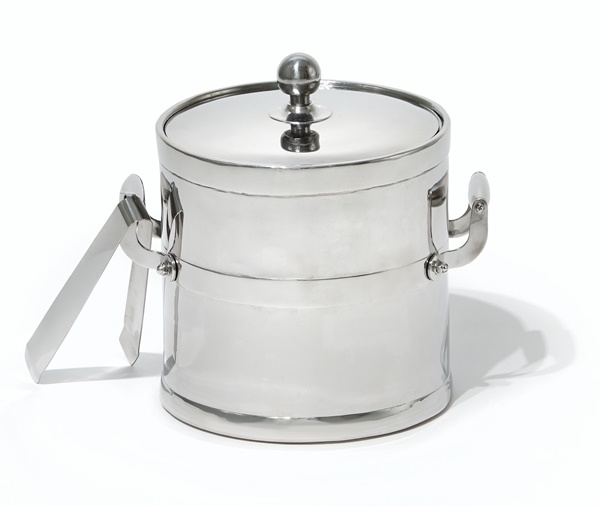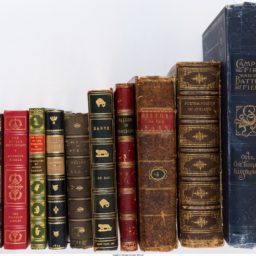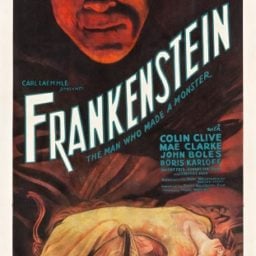


Willem de Kooning, East Hampton II (1968). Courtesy of Heritage Auctions.
Though this year marks Heritage Auctions‘ eighth venture into the modern and contemporary art market, it is only their second time doing so in New York. The good news: after the stunning success of of last year’s outing, the curated selection in this Monday’s Modern & Contemporary Art Signature Auction is more exciting than ever, with several major works by the likes of Willem de Kooning, Wassily Kandinsky, and Helen Frankenthaler up for bidding, and will be held at the Fletcher-Sinclair Mansion in Manhattan.
Here, we ask Leon Benrimon, the director of modern and contemporary Art in Heritage Auctions New York, about what’s new for Heritage, what lots to keep an eye out for, and more.
How has the auction market in New York compared to Heritage’s home base of Dallas? Why move your spring auction here?
Obviously they are completely different markets. We love everything about Dallas. It is home. The collectors, museums, institutions, the art fair—it’s all a very tight knit network. We support each other, and it’s really a beautiful and amazing thing that happens in the community. I feel very few cities have a public that is as supportive as Dallas is, and the growth of the Dallas Art Fair, which we have supported since its first edition, is a testament to that. All of our auctions in Dallas are met with the utmost support from the Dallas collectors, museums, and institutions. We are the only major auction house in Dallas, but more importantly, we are the largest auction house south and west of New York, so we provide clients outside of New York with a valuable resource that they can’t get anywhere else.
With that said, we moved our entire sale to New York this season for one reason: our consignors. We consistently strive to get our consignors the best possible results for their artworks. Based on the increased value of the material that we have been fortunate enough to offer—and the number of international bidders that all converge in New York in the spring—we felt we would be doing our consignors a disservice by not offering their works where they can perform best. We follow this mantra with all of our auctions, as we hold them where they will do best, whether that is in Dallas, New York, Los Angeles, and San Francisco.
Do you have a favorite work from this upcoming sale?
I do. It’s hard not to say our de Kooning work from 1968, because it is, for me, just perfect. Great year, subject, size, and it is stunning in person.
However, if I had to choose, I would choose Tantric, the 1977 work from Helen Frankenthaler. Sadly, the first time I saw it was on a computer screen, however, when I got to see it in person, wow. It just blew me away. The work is so grand and so massive, I just got lost in it. The pools of vast, deep and rich colors and its fantastic gestural qualities, just resonated with me from that moment to this one. Quite selfishly I felt the necessity to have the foremost Color Field scholar Karen Wilkin write the catalog entry because I knew no matter how hard I tried, or eloquently I wrote, I would not be able to capture the beauty and importance of it had I wrote the entry myself. She, feeling as I did about the work, graciously took time from her schedule curating museum exhibition, took the time to do so. I think the only thing that makes me sad about the work, is that I will have to see it go!

Helen Frankenthaler, Tantric (1977). Courtesy of Heritage Auctions.
One of the lots included in the May 2 sale is Jeff Koons’ Ice Bucket (1986). What is its provenance, and what is its story? How did this remarkable work make its way to Heritage?
We are incredibly fortunate to offer Ice Bucket from the estate of Anita Reiner. She purchased the work shortly after its exhibition, and it has been in the family ever since. When we learned that this work was exhibited in the Whitney Museum retrospective, we were even happier. The Luxury and Degradation series, of which this is from, is such an interesting one for Koons—who having just come off the responses to The New and Equilibrium series—had to follow up with works that were just as meditative, powerful, and conceptual, but managed to make works almost opposite in scale and composition. The work is from a small edition size, so although other examples have sparingly come up at auction, we feel that coming from an esteemed collection and having such important exhibition history, it’s an opportunity that collectors will not likely see again.
Can you tell us about the collection of Anita Reiner? What do you think set her apart as a collector?
Sadly, I never met Anita, but from what I could tell and what has been told to me, we would get along. She had a voracious appetite for consuming information about new artists and their artworks. She immediately went from novice collector to someone who ate, slept, and breathed art constantly, which is something I can associate with coming from a large collecting and art dealing family. That lives through her estate, which is as vast and broad as it is important. She collected some of the best examples by the artists, buying works by some of my personal favorites like Warhol, Basquiat, and Koons, just after they were made. She was the kind of collector a gallery could dream of: quick, decisive, yet supportive and consistent.

Jeff Koons, Ice Bucket (1986). Courtesy of Heritage Auctions.
How does the market for modern and contemporary art compare to some of Heritage’s other offerings, such as collectibles like movie posters, sports memorabilia, or cars?
It’s an incredibly interesting dichotomy. The collectibles market is much broader as is the diversity of the offerings. We sell everything from luxury women’s handbags to Nobel Peace Prizes, Olympic torches to the chair Harry Potter was written in, so our ability to market to the public is unrivaled. We have this remarkable ability to put objects in front of the exact collectors or public that needs to see them which primarily due to our internet and digital marketing, a space which we have always been first movers in. As a result, we have become experts on selling such a diverse range of objects. We benefit greatly from our 40 collecting categories, as we get amazing cross over marketing and new bidders from our other categories into our sale as a result.
In addition, we get some amazing innovations from those categories, so interesting ideas that came from our luxury handbags department or our sports department, might get implemented in Modern and contemporary Art, and as a result, I think we have become industry leaders in continually having an innovative platform. Many of the things I see us doing in other categories are truly remarkable and while our bidders are probably not ready for them just yet, when they are, we can implement immediately. One the other hand, we are innovating in our own way in the Modern and contemporary art category within the company by bringing in high-value works in smaller volume than our collectibles counterparts. Naturally, the market for these works is more refined and requires more personal attention and concierge service with clients, especially in this time of growth.








